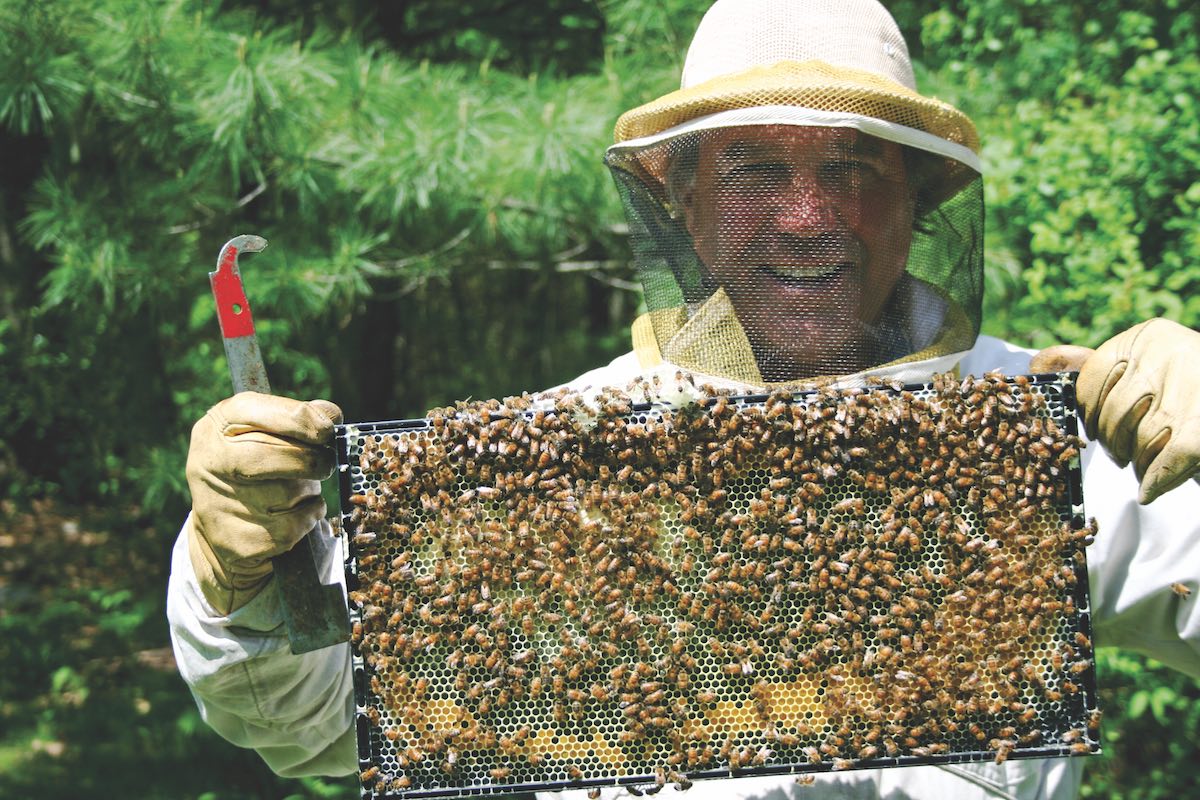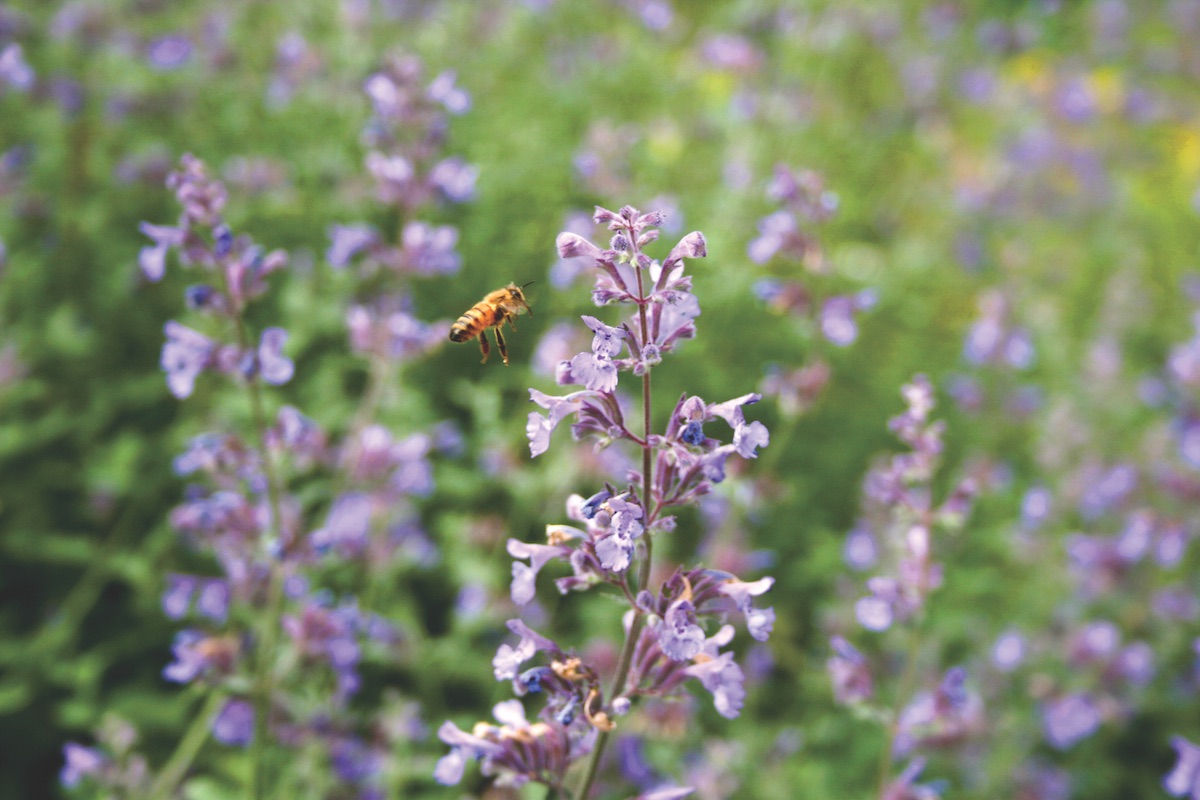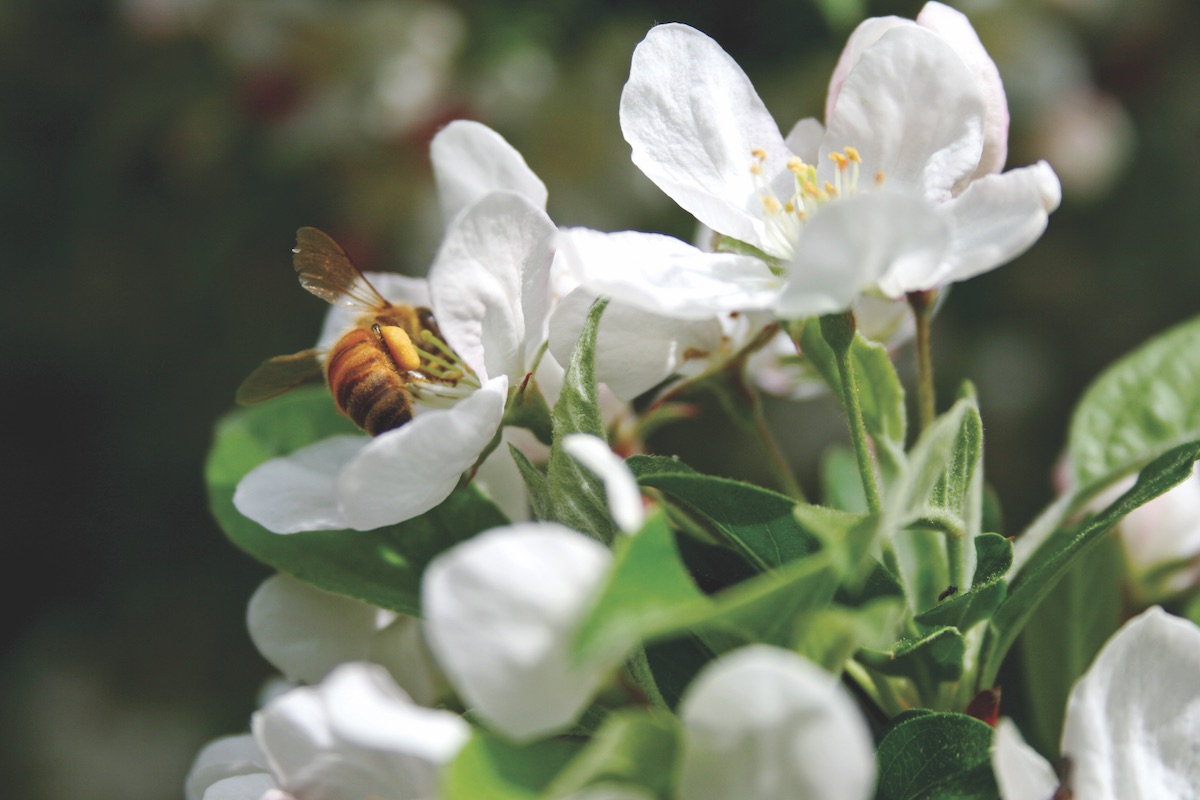
E. M. Swift shares the joys and benefits of backyard beekeeping.
Until I became one, I thought of beekeepers as eccentric, brave, and somewhat dotty. I don’t know why. I’d never actually known a beekeeper. It seemed like such an exotic pursuit, like breeding llamas or milking goats. I mean, who does that? It turns out, I do. As do two other people on my street. (Keep bees, not milk goats. Seriously, who does THAT?) Beekeepers aren’t any of the things I thought they were. They are the soccer moms of backyard hobbyists. Beekeeping has become the new normal. It is the very pinnacle of suburban conformity and chic.

Lavender plants are of particular interest to E. M. Swift’s bees.
And why shouldn’t it be? Honeybees are excellent role models. They are social, selfless, industrious, productive, and environmentally responsible. Flowers and flowering trees flourish from their attentions. They are essential to commercial agriculture and useful to backyard gardeners, pollinating everything from raspberries to squash to apples. The honey produced by the bees is more than delicious—it helps cure pollen-related allergies and never spoils. (Edible honey has been found in the tombs of the pharaohs.) Beeswax can be used for waterproofing, for candle making, or as a furniture polish. Propolis, the gummy substance with which bees caulk cracks in their hives, is believed to have been the secret ingredient in the varnish on Stradivarius violins. Even the bee’s sting has its uses: Many believe bee venom is a tonic for arthritic joints.
To be honest, though, I don’t keep bees for any of these practical reasons. I keep bees because I like having them around.
—E. M. Swift
They improve my spirits. I like to watch them gathering pollen, foraging on the faces of flowers, their rear legs growing plumper and yellower as the pollen sticks to the tiny hairs. I like to watch them collecting nectar, licking their forelegs, lapping the drops of sucrose, which, back in the hive, they convert into golden, delicious honey. I like to listen to their buzz as thousands drunkenly descend on a single Zumi crabapple tree in full bloom.
I like to see which flowers attract them, a counterintuitive exercise. As a general rule, the showier the flower, the less likely it is to draw bees. Mine prefer dandelions to daffodils, purple loosestrife to lilacs, clover to roses. Garlic chives are mother’s milk to my honeybees. Peonies? Not so much. They prefer blue flowers to red ones: lavender, catmint, borage, clary sage, carpet bugle, and ‘Blue Billow’ hydrangeas. Bees will forage as far as 2 miles away, so some of my bees are also someone else’s. Come one, come all. They’re all welcome here.

Honeybees forage in a bed of garlic chives.
As for the honey they make, the variety of flowers they visit adds to the complexity of its flavor. It also determines the color. Honey made from apple blossoms is lighter in hue than the honey made from goldenrod. Mix it together—wildflower honey—and you have a complex, beautiful blend unique to your own backyard.
And there is another reason I keep them. Honeybees need our help. It turns out that the resourceful honeybee, which is not native to this continent (early Europeans brought them), has a lot of enemies out there. There are mammal enemies: bears, skunks, mice, and shrews; insect enemies: ants, dragonflies, wax moths, and mites; and diseases: foulbrood, chalkbrood, nosema, nematodes, and the mysterious colony collapse disorder. Where I live, in Massachusetts, winter is the most dangerous enemy of all.
In all these matters, the beekeeper can help ward off, if not entirely prevent, catastrophe. It gives us something to do while the bees are making our lives—and the lives of our fruits, vegetables, and flowers—better. It makes us feel useful. And when, at the end of a long, hot summer, we’re rewarded with a few gallons of honey, well, it doesn’t feel quite so much like stealing from our buzzy fuzzy friends.

An industrious bee gathers nectar from a Zumi crabapple tree.
By E. M. Swift | Photos courtesy of E. M. Smith



